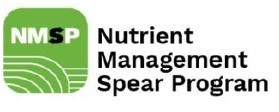New York On-Farm Research Partnership Value of Manure Project

Research questions:
- How much nitrogen can be credited to manure?
- What is the yield impact of fall or spring manure applications in grain and silage corn?
Background:
Manure has all seventeen essential plant nutrients and can increase yield beyond what can be obtained
with fertilizer only. In this project, we evaluate the nitrogen fertilizer replacement value (how much N
can we credit to manure?) and yield differences as a result of manure application. This project is funded
by New York Farm Viability Institute (NYFVI) and the Northern New York Agricultural Development
Program (NNYADP). We are looking for farmer participants so let us know if you are interested in
implementing this trial on your farm. We can test any type of manure you are interested in evaluating
(liquid, separated, solids, compost, etc.) and any application method and timing. Contacts: Quirine
Ketterings (qmk2@cornell.edu), Kirsten Workman (kw566@cornell.edu), and Juan Carlos Ramos
(jr2343@cornell.edu).
Required for participation:
- Corn harvester (chopper or combine) with calibrated yield monitor system.
- Trial plot should get 20-30 lbs N/acre as starter only (no broadcast fertilizer N).
- Field size: length minimum of 1200 feet. Field width minimum of 12 times the harvester width. Trial area should be as homogenous as possible.
- Ideally 3rd or 4th year corn where N fertilizer is expected to be needed for optimal yield but otherwise with optimal fertility (pH, P, K, etc.).
- Sidedress unit that can apply up to 175 lbs N/acre in 35 lbs N increments (0-35-70-105-140-175) per the trial plot plan (below, Figure 2).
- Manure application equipment (surface application, incorporation, or injection) and your preferred manure type (liquid, separated liquids, solids, compost, digestate, etc.).
Experimental design:
The experimental design has three strips where manure is applied during fall 2022 or spring 2023, and
three where no manure is applied. Strips should be 2-3 harvester passes width so that at harvest, we
have at least one clean yield pass per plot. Each strip will have 6 sub-strips, each of them with a different
sidedress N rate. See below aerial image 1 (each sub-strip was 300 ft long and 120 feet wide) and the
plot plan with plot numbers (figure 2).
What you implement:
- Three strips of manure applied homogeneously across the strips (applied at fall or spring) and three strips without manure, per the plot plan (Figure 2).
- Flagged corners for each manure strip.
- Sidedress nitrogen per the plot plan (6 N rates per strip, Figure 2), ideally applied between V4-V6. Farm provides the variable rate prescription based on the 6 N rates.
- Yield data collected with a calibrated yield monitor system.
- All necessary inputs for regular crop production (weed control, etc.).
What you collect:
- One manure sample per strip taken at application (3 samples total; keep frozen until we pick it up; we can supply sampling cups).
- Yield data with a combine or chopper with calibrated yield monitor system.
- Field history information and crop management info (planting date, starter fertilizer use,
manure application rate and method and timing, any field crop passes for weed or pest control,
timing of sidedressing, past crop rotations, in addition to the yield data). - Manure systems information (type of storage, treatment, etc.).
What the Cornell team and collaborators will do (and share with you):
- Send the manure to be analyzed for nutrient content.
- Aid with treatment implementation and flagging (and GPS referencing) of strips and sub-strips.
- Collect soil samples for general soil fertility, ISNT-N (0-8 inches) and PSNT (0-12 inches) just before you sidedress the field.
- Collect NDVI imagery from satellite imagery (drone as well most likely).
- Collect CSNT samples and forage quality for corn silage fields for each plot.
- Share final reports with yield data, crop response to manure and fertilizer, all soil, manure, and silage quality information, and final reporting with you.
Please let us know if you will participate and where the trial location will be located!
Once we have a list of participants, we will start documenting locations and put together the plan for
completing the trials with you in 2023.
Thanks!
Quirine (607 339 7240), Kirsten (607 255 4890), and Juan Carlos (531 207 6339)
Upcoming Events
WEBINAR - Automated Milking Systems Efficiency: Balancing Focus on Individual Cows and System Optimization
May 8, 2024
Please join Cornell the SWNY team and MSU Extension for our talk with Dr. Pablo Silva Boloña on improving efficiency of Automated milking systems by focusing on milking settings for individual and group success.
Broiler Field Day at Sunny Cove Farm
June 6, 2024
Alfred Station, NY
Join us for a field day to explore broiler production, processing, and finances. Meghan Snyder of Sunny Cove Farm will be our host. She raises small batches of organic broilers, processing them on-farm under the 1,000 bird exemption.
Stockmanship and Stewardship 2024
October 25, 2024
Hamburg, NY
Save the date!! The event is one of 4 across the US and is a two-day educational experience featuring low-stress cattle handling demonstrations, Beef Quality Assurance educational sessions, facility design sessions, and industry updates.
Announcements
No announcements at this time.





